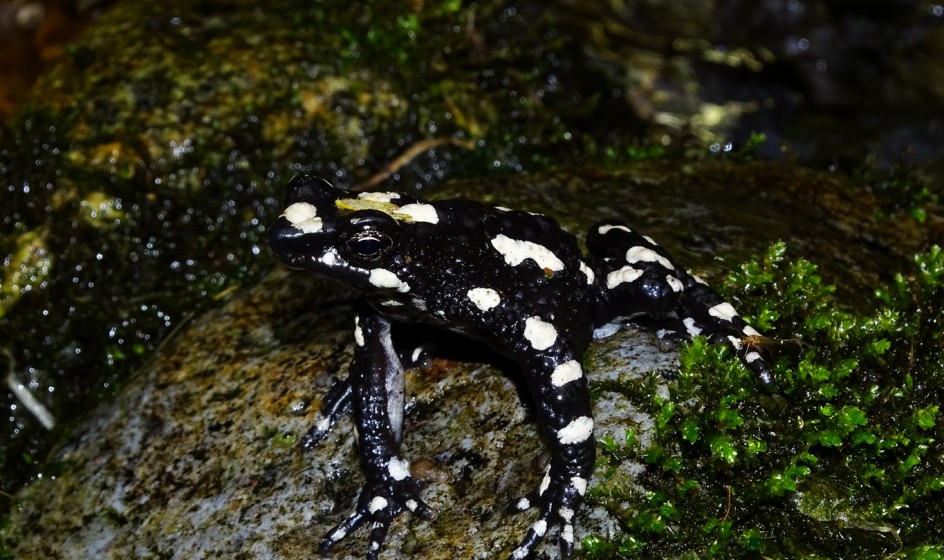

Starry Night Harlequin Toad

Conservation of the Critically Endangered Starry Night Harlequin Toad, a species that was “lost to science”
Harlequin toads (genus Atelopus) are the most threatened group of amphibians in the world, with 81% of species classified as Endangered or Critically Endangered. Disease transmission by the highly deadly chytrid fungus (Batrachochytrium dendrobatidis, Bd) and habitat loss have been the main drivers of extinction for Atelopus, with more than 75% of the high mountain harlequin toad species possibly extinct.
The Sierra Nevada de Santa Marta seems to be the only place with apparently stable populations of high-altitude harlequin toads. This place is home to five endemic and threatened Atelopus species, including A. laettisimus and A. arsyecue; in addition to 17 other endemic amphibians. In 2019, thanks to a partnership between the Atelopus Foundation, the Arhuaco del Sogrome indigenous people and Re:Wild, the starry night harlequin toad (A. arsyecue) "lost to science" was rediscovered, after not being registered since 1991. Why the population could persist is largely unknown, and to date no assessments of the impact of Bd and other threats on these populations have been conducted. The project's main aim is to establish a monitoring program to understand the population dynamics of A. arsyecue, identify the main threats to its survival and use this information to develop a strategy evidence-based conservation for the species.
A big thank you to Zoo Munich whose kind donation has made this project possible!
Species: Starry night harlequin toad (Atelopus arsyecue)
Region: Columbia
Implementing Partner: Fundación Atelopus
Funding period:
Sept 2021 - Aug 2022
Project goals
- To evaluate and monitor the population dynamics and threats to the survival of endemic and threatened arsyecue
- To design and develop conservation strategies with local communities to protect these species
Activities
- To collect demographic data using tagging and recapture techniques and acoustic monitoring, as well as morphometric, ecophysiological and environmental variables
- To identify and prioritize anthropogenic threats and the presence and prevalence of the chytrid fungus in arsyecue populations
- To sensitize the local communities highlighting the ecological, cultural and conservation importance of community amphibians in the area
- To incorporate the information collected to design conservation strategies to mitigate threats to Atelopus and its habitats together with the community and government organizations
